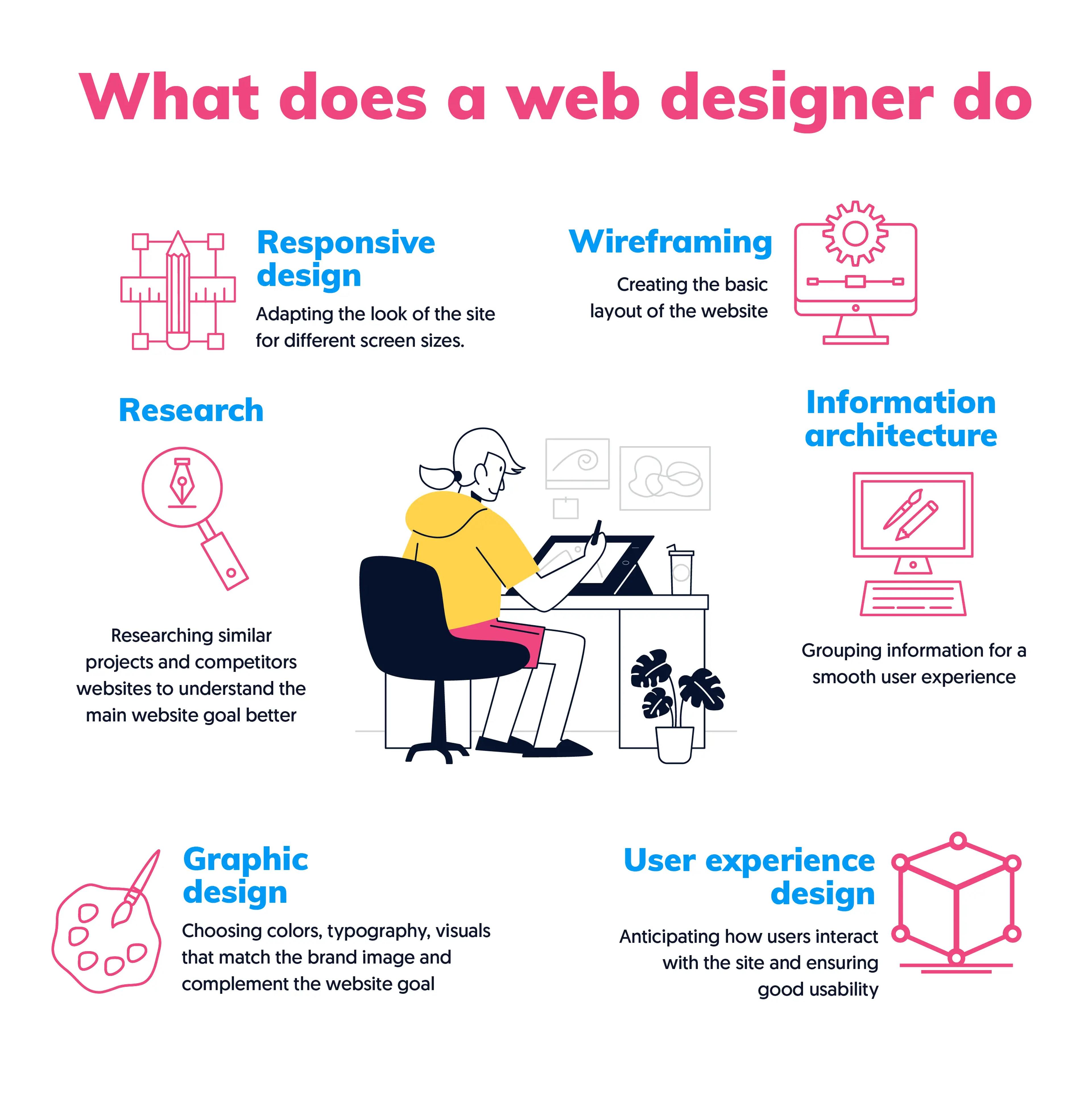Innovative Web Style Solutions for Modern and Engaging Internet Sites
In the realm of internet design, the search of modern and engaging remedies has actually ended up being significantly important for services intending to capture customer interest. By integrating strong shade plans, interactive components, and responsive layouts, designers can create experiences that not only reverberate with customers yet additionally improve brand identification.
Accepting Strong Color Schemes
In internet layout, the calculated usage of strong color plans can significantly improve user involvement and brand identification. By employing vivid shades, developers can create visually striking web sites that catch focus and promote an unforgettable experience. An appropriate shade palette not only reflects a business's values but likewise stimulates details emotions that can influence individual actions.
Strong shades can be used to guide individuals' focus to essential elements such as phone call to activity, enhancing conversion rates. As an example, making use of contrasting colors for switches and web links can make these aspects stand out, triggering customers to communicate quicker. A cohesive shade plan across the site enhances brand name acknowledgment, developing a feeling of familiarity and count on among visitors.
However, it is vital to balance strong shades with ample white room to stay clear of frustrating customers. Effective use typography additionally complements bold colors, guaranteeing readability while keeping visual charm. Ultimately, welcoming strong color design in website design not just boosts visual top quality however likewise plays an important role in achieving strategic company goals, making it an important factor to consider for contemporary internet growth.

Using Interactive Elements
Interactive aspects are necessary in modern internet design, as they dramatically improve customer engagement and develop a more vibrant surfing experience. By incorporating functions such as animations, hover results, and clickable elements, web sites can urge users to explore material a lot more completely and return for future brows through.

Micro-interactions, such as subtle computer animations when a button is clicked or a form is sent, can also enhance the customer experience by giving instant responses. These small details can make the website feel even more receptive and to life, promoting a feeling of link between users and the website.
Moreover, gamification aspects, such as benefits for completing particular activities, can motivate individuals to involve with the material much more deeply. By attentively integrating these interactive parts, web developers can produce an unforgettable and engaging on-line experience that resonates with customers and motivates them to return.
Implementing Receptive Layout
Implementing receptive style is crucial in today's multi-device landscape, ensuring that web sites provide an optimal watching experience throughout various screen dimensions. As users progressively access the internet with smart devices, tablets, and desktops, a one-size-fits-all strategy is no more viable. Receptive design permits smooth navigating and interaction, adapting format and material to fit the gadget being made use of.
Key principles of responsive style consist of liquid grids, adaptable images, and media questions. Fluid grids utilize family member units, such as percents, instead of fixed pixels, enabling aspects to resize proportionately. Flexible photos scale within their having components, preventing overflow and maintaining visual honesty. Media inquiries assist in the application of different styles based on the gadget's qualities, such as size, height, or resolution, permitting developers to customize the customer experience successfully.
In addition, responsive style enhances search engine YOURURL.com optimization performance, as search engines favor mobile-friendly sites. By carrying out receptive style, companies not only enhance find more information customer contentment and involvement yet additionally boost their reach in a competitive digital landscape. As technology remains to develop, embracing responsive design has actually ended up being a fundamental practice for any kind of contemporary and interesting website.
Integrating Multimedia Web Content
Multimedia web content plays an essential function in creating engaging and vibrant internet experiences that capture users' attention and boost understanding. By combining message, images, audio, and video, internet sites can use a richer story that interest numerous learning designs and preferences. This assimilation not only strengthens individual involvement however likewise help in communicating complex concepts succinctly.
Incorporating premium images and infographics can damage up textual content, making it much more absorbable. Video clip tutorials and presentations can offer extensive insights that fixed material may not completely communicate. Audio components, such as podcasts or background songs, can also enhance the environment of an internet site, producing an extra immersive experience.
Moreover, the calculated use multimedia can improve SEO performance, as online search engine favor varied material kinds, boosting presence. Nevertheless, it is critical to make certain that multimedia aspects do not hinder page tons times, as this can bring about customer disappointment. By balancing multimedia combination with efficiency factors to consider, web developers can develop aesthetically enticing and practical web sites that reverberate with individuals, cultivating a deeper connection and motivating return sees.
Prioritizing Individual Experience

To attain an optimum user experience, designers should concentrate on numerous vital principles. Receptive style is crucial; sites should adjust seamlessly to different gadgets and display sizes. This accessibility makes sure that individuals can involve with material no matter their chosen platform. Second of all, quality in format and hierarchy is critical. Clear contact us to action, readable typography, and organized web content overview users, decreasing cognitive tons.
Inevitably, prioritizing UX not just elevates user contentment however also drives engagement and conversion prices, look at here now making it a vital element of contemporary internet layout techniques. By placing individuals at the facility of layout efforts, websites can develop enduring, positive perceptions that motivate return sees.
Verdict
In final thought, modern website design services that stress strong color systems, interactive aspects, responsive style, and multimedia content substantially enhance customer engagement and complete satisfaction. Prioritizing individual experience with clear designs and continual feedback additionally adds to boosted conversion rates. By taking on these techniques, internet sites can effectively astound visitors and strengthen brand name identity, eventually leading to a much more vibrant and appealing on the internet visibility. The assimilation of these design principles is vital for achieving contemporary internet layout objectives.